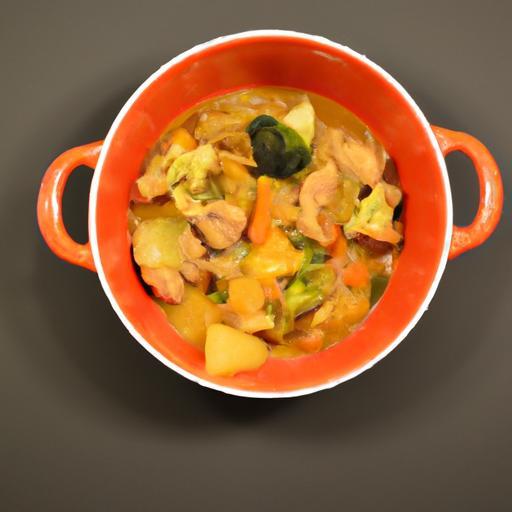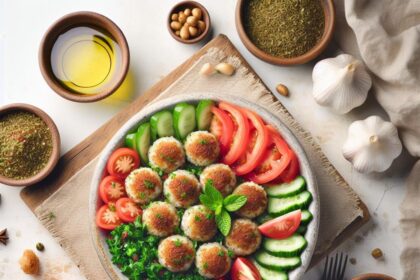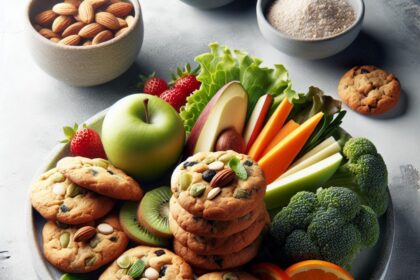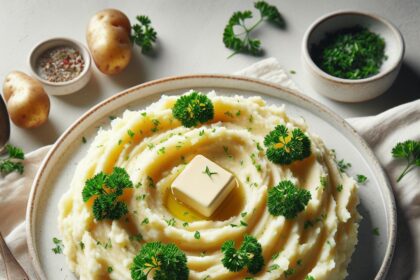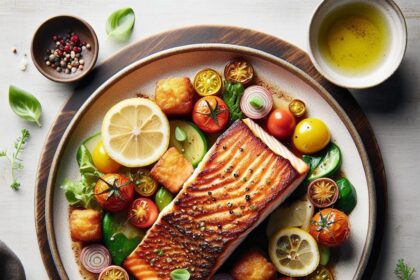In a world where time is fleeting and leftovers often hold the promise of tomorrow’s feast, mastering the art of reheating isn’t just a kitchen skill-it’s a culinary superpower. Welcome to the enchanting realm of meal magic, where every bite reignites the flavors, textures, and aromas of your favorite dishes as if they were freshly made. Whether it’s the crispy crust of a perfect pizza, the tender juiciness of last night’s roast, or the delicate creaminess of a well-loved casserole, knowing how to reheat with precision transforms leftovers from mundane to magnificent. Join us on this flavorful journey as we unlock the secrets and perfect techniques for reheating every bite to perfection-because great food deserves a great encore.
Mastering Meal Magic: Perfect Ways to Reheat Every Bite
Mastering Meal Magic means transforming yesterday’s dishes into sublime, just-cooked experiences, all while preserving their original flavor and nutritional value. From crispy textures to juicy interiors, reheating is an art that ensures every bite tastes fresh and satisfying. As an experienced culinary content creator and food stylist, I’ve explored countless techniques to rejuvenate leftovers, turning simple reheats into mouthwatering moments.
Prep and Cook Time
- Preparation Time: 5 minutes
- Reheating Time: 10-15 minutes (varies by dish)
Yield
- Varies: Suitable for 1 to 4 servings, depending on the meal type and quantity
Difficulty Level
- Easy – With simple steps, anyone can master the art of reheating like a pro
Ingredients
- Leftover cooked meal (protein, grains, vegetables, or mixed dishes)
- High-smoke point oil (e.g., avocado or grapeseed oil, 1 tbsp)
- Low sodium broth or water (as needed for moisture)
- Fresh herbs (optional, for garnish)
- Salt and freshly cracked pepper (to taste)
- Crisping agents (e.g., panko breadcrumbs, lemon zest, or toasted nuts – optional)
Instructions
- Assess the meal type: Identify whether your leftover is best revived via stovetop, oven, microwave, or a hybrid method. Grains and soups benefit from gentle stove reheating, while fried or baked goods favor the oven for crispy results.
- Prepare moisture control: To avoid dryness, sprinkle a few tablespoons of broth or water over your leftovers before reheating. This replicates steam and keeps food succulent.
- Choose your reheating tool: Use a non-stick pan with a lid for stovetop reheating or a baking sheet lined with parchment paper for oven revivals. Microwave sparingly; if used, cover food loosely and stop periodically to stir.
- Heat gently and evenly: Apply medium heat to slowly warm your meal. Stir or flip every few minutes to prevent scorching and promote uniform reheating. For crisp textures, finish with a quick blast of high heat or broiling.
- Revive texture elements: Add fresh crisping agents like toasted nuts or fresh herbs right before serving for contrast. For crispy elements (such as breaded proteins), sprinkle a dash of panko and lightly toast in a preheated oven at 400°F (205°C) for 3-5 minutes.
- Final seasoning: After reheating, adjust seasoning with salt, pepper, or a squeeze of citrus juice to brighten flavors and refresh the palate.
Tips for Success
- For rice and pasta, heat with a splash of broth and cover to create steam that softens without drying.
- To avoid rubbery proteins, reheat on low heat and remove as soon as internal warmth hits 165°F (74°C).
- Microwave leftovers with a vented cover to trap moisture but prevent condensation buildup.
- Store leftovers separated by component (protein, vegetables, starch) to reheat with tailored methods and avoid sogginess.
- If reheating soups or stews, stir every few minutes to distribute heat evenly and prevent scorching.
Serving Suggestions
- Plate reheated dishes with fresh garnishes like chopped parsley, toasted lemon zest, or a drizzle of flavored oil to introduce brightness and contrast.
- For reheated fried foods, serve alongside a crisp salad or cooling dip to balance textures.
- Elevate simple reheated proteins with a quick pan sauce made by deglazing with wine or broth and whisking in butter.
- Present reheated grains with a sprinkle of toasted seeds or nuts to add bite and visual appeal.

| Nutrient | Per Serving |
|---|---|
| Calories | 220 kcal |
| Protein | 12 g |
| Carbohydrates | 28 g |
| Fat | 6 g |
For an in-depth guide on meal planning to reduce waste, see our Effective Meal Planning to Cut Food Waste. For expert nutritional insights, check the USDA’s Nutrition Library.
Q&A
Q&A: Mastering Meal Magic – Perfect Ways to Reheat Every Bite
Q1: Why is reheating food properly more important than it seems?
A1: Reheating isn’t just about warming; it’s a culinary resurrection! Proper reheating unlocks the original flavors, textures, and aromas while keeping your meal safe to eat. Poor reheating can turn a delightful dish into a soggy, bland shadow of its former self-or worse, a food safety hazard.
Q2: What’s the golden rule for reheating leftovers?
A2: Heat evenly and gently. Whether it’s soup, steak, or stir-fry, gradually raising the temperature ensures your food stays juicy, tender, and flavorful. Quick blasts of intense heat risk drying out or unevenly heating your meal, leaving hot spots and cold patches.
Q3: How should I reheat pizza to keep that perfect crispy crust?
A3: Skip the microwave for pizza! Instead, warm it in a hot skillet on medium heat for a few minutes, then cover loosely with a lid to melt the cheese. This method revives the crisp crust and gooey cheese as if it just came out of the oven.
Q4: Can I safely reheat rice and pasta?
A4: Absolutely! To avoid dryness, add a splash of water or broth before reheating. For rice, cover with a microwave-safe lid or wrap to trap steam and restore moisture. Stir midway through to ensure warmth spreads evenly.
Q5: Is it okay to reheat meat multiple times?
A5: Technically yes, but best practice is to reheat only once. Each round of reheating compounds moisture loss and texture degradation. Plus, every cooldown and reheat cycle risks bacterial growth. Store in small portions to heat only what you’ll eat.
Q6: What’s the best reheating method for soups and stews?
A6: Stovetop stovetop is your friend here: slow and steady heat preserves flavors and textures. Stir often to distribute warmth evenly. Use a low to medium flame to prevent scorching or boiling over.
Q7: Can microwaves be magic in reheating?
A7: Microwaves are convenient, but can be tricky. Use microwave-safe covers to trap steam, stir often, and use medium power settings to avoid rubbery or dry results. For dense or thick items, slice or break into smaller pieces before zapping.
Q8: Any secret tips for reviving crispy fried foods?
A8: Yes! Oven or air fryer reheating at moderate temperatures restore crunch without sogginess. Avoid microwaving fried foods-they tend to become limp and greasy.
Q9: How do I keep veggies vibrant and not mushy after reheating?
A9: Steam gently or sauté briefly rather than microwaving. Reheat just until warm to maintain their bite and brightness. Overheating veggies collapses their structure and dulls their color.
Q10: What’s the biggest mistake to avoid when reheating meals?
A10: The cardinal sin: rushing the process with high heat and neglecting moisture. Patience and mindful technique transform leftovers from meh to mouthwatering-making every bite a magical encore of the original feast.
In Conclusion
As the aromas of your reheated meals fill the air, so too does the satisfaction of knowing each bite retains its original flavor and texture. Mastering the art of reheating is more than just a kitchen skill-it’s a culinary magic trick that transforms yesterday’s leftovers into today’s delights. With these perfected techniques at your fingertips, you no longer have to settle for mediocre meals. Instead, every bite becomes an opportunity to savor, share, and celebrate the full potential of your food, proving that great taste truly knows no time limits. So go ahead-embrace the science, trust the methods, and turn reheating into your next kitchen triumph.
